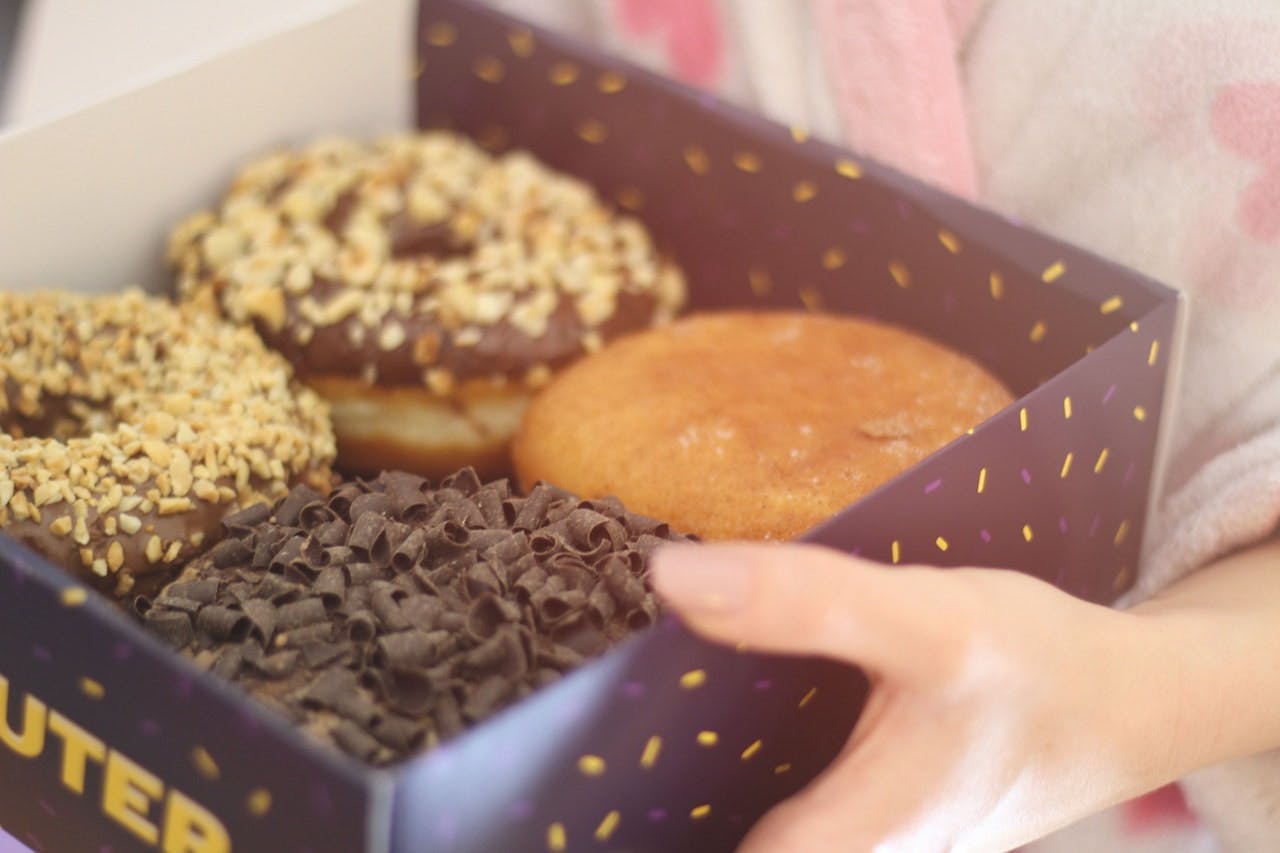Tempting the Creation of Habits
In August, Panera Bread had this amazing deal. A free bagel every morning. For the entire month. For free. Even their specialty cinnamon crunch bagel. Did I mention it was free? And so I began driving a different way to work. I didn’t have to make breakfast in the morning. I picked up my bagel. And so often couldn’t resist the Chai Tea Latte.
And then September dutifully came. It seemed I had forgotten how to even make breakfast. I forgot my old route to work, too — I was used to driving the way that passes the Panera. And when I saw the sign, like Pavlov’s dogs, I began to drool.
Taking a similar tack, this past May, my local Dunkin Donuts had a promotion for 99 cent iced tea. Now, I should be paid to say this, but Dunkin Donuts really does make amazing iced tea. And when it’s only 99 cents? Even better. Which size cup? Any size. Clearly I’m going to get the large. And so for hours, I’d sip on my large iced tea. It became a fixture of my classroom when I’d teach — the huge cup that I’d drink all day. And then, in the heat of the summer, Dunkin Donuts would raise its price.
Not only did I have to fight a physiological habit of a steady cool stream of caffeine, but I now had to fight a psychological habit of having my cup all day long.
Habits are powerful, and the above examples illustrate how two companies were willing to lower costs initially to reel in consumers, hoping to make having a morning bagel or an iced tea as habitual as putting your shoes on.
Behavioral Science, Democratized
We make 35,000 decisions each day, often in environments that aren’t conducive to making sound choices.
At TDL, we work with organizations in the public and private sectors—from new startups, to governments, to established players like the Gates Foundation—to debias decision-making and create better outcomes for everyone.
Why do habits work?
When we are used to doing something, the behavior becomes automatic. That is, it doesn’t require cognitive effort or planning. Consider how hard it is for a five year old to learn to tie shoes. I’ll assume if you are reading this, you probably can do it much faster (while having a conversation, even). When something becomes automatic, it takes less effort. If everyday you get up and stretch, at first, it’s hard to remember and to motivate yourself. But after a while, you can do it half-asleep. It’s simply what you do. It follows, therefore, that we should habitualize as many healthy behaviors as we can: drinking water, brushing teeth, washing our hands before cooking, stretching.
When routines are created, we create associations that cue us to future expectations. The human brain is designed to notice cause and effect. Pink and orange mean Dunkin Donuts. The street where the Panera is means I’m about to eat some carbs. Those associations provide cues, and we become primed (mouth drools). For example, I rarely go to the movie theatre without ordering popcorn. For me, this is part of the experience. A movie theatre is a cue for those who normally eat popcorn while watching movies. In one study, those who habitually eat popcorn at the movies ate more popcorn at a movie theatre than non-habitual popcorn eaters (Neal, Wood, Wu, & Kurlander, 2011). This is not surprising. However, Neal et al. manipulated another variable — whether the popcorn was stale or not. Unlike the non-habitual eaters, the ones who usually eat popcorn seem to mindlessly eat the popcorn regardless of hunger or popcorn freshness.
So, how do we break habits?
That same study showed that the result of habitual popcorn eaters eating stale popcorn only occurred in the setting of a movie theatre. When they watched movie clips in a conference room, they ate less popcorn when it was stale or when they weren’t hungry. The setting of a movie theatre was a cue to eat popcorn. In a second study, Neal et al. required the popcorn eaters to eat with their non-dominant hand. This disruption also broke the habitual tendency; participants now ate less popcorn when it was stale or if they weren’t hungry.
So, to break a habit, we need to disrupt a cue. We need to consciously make an effort to avoid cues that may tempt us to engage in our automatic tendencies. I can’t drive blindfolded, but maybe I could avoid the way to work that passes the Panera. Or maybe I can consciously implement what my breakfast plan is the night before.
In general, research has shown that recruiting our goal-directed (non-automatic) part of our brain is important in creating and breaking habits. For example, in one study examining the creation of a flossing habit, half of subjects were assigned to write about when and where they would do their once-daily flossing (Orbell & Verplanken, 2010). Those who made an implementation plan flossed twice as many days as those without an implementation plan.
Habitual behavior is neither inherently good nor bad; it is simply a powerful tendency of our brain that can turn us into iced tea junkies or flossing fanatics. This design likely evolved to conserve scarce cognitive resources — allowing us to perform functions without thinking much about their execution.
The AI Governance Challenge
But sometimes we need to force ourselves to think. We need to make plans, and at least try to remove the cues that lead us to suboptimal behavior (like, say, continuing to buy a bagel everyday at full price). By definition, if a great deal is what drives us to a product, then our value function for the product should change when that great deal is removed. If it doesn’t, you can bet that our tendency toward the familiar has been unconsciously factored in.
Put simply, when we don’t evaluate the cues driving our behavior — taking stock of what they are, and who is setting them — we fall prey to our worst inclinations and automatic actions. It’s something you can be sure bagel and tea salesman the world across are banking on.
References
Neal, D. T., Wood, W., Wu, M., & Kurlander, D. (2011). The pull of the past: When do habits persist despite conflict with motives?. Personality and Social Psychology Bulletin, 37(11), 1428-1437.
Orbell, S., & Verplanken, B. (2010). The automatic component of habit in health behavior: Habit as cue-contingent automaticity. Health Psychology, 29(4), 374-383. DOI: 10.1037/a0019596
About the Author
Yasmine Kalkstein
Yasmine is currently an Associate Professor of Behavioral Sciences and Leadership at the United States Military Academy at West Point, where she also serves as the Lead Integrator in the Character Integration Advisory Group. As a Fulbright Scholar, she spent a year working at the Medical Decision Making Center at Ono Academic College in Israel. She received her Ph.D. in Educational Psychology from University of Minnesota and her BA in Biopsychology from University of Virginia. She is interested in the fields of character and leadership development, medical decision making, education, and human-centered design.





